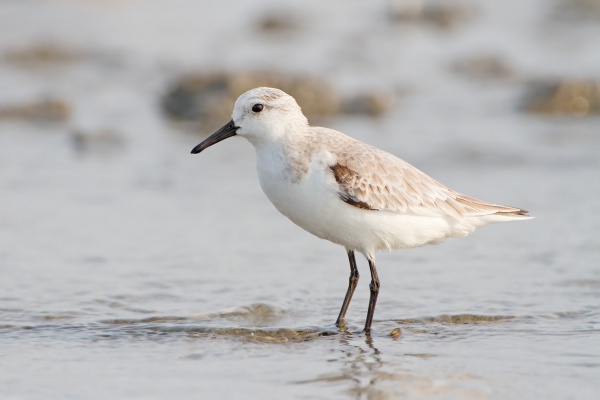Facts About Sanderling
The sanderling is an enchanting small wading bird, deriving its name from the Old English term "sand-yrðling" which translates to "sand-ploughman." These birds breed in the Arctic and migrate across various continents during the winter. They're notably social creatures, often observed in large flocks on coastal mudflats or beaches. A distinctive behavior they exhibit while foraging for small invertebrates is a "bicycling" leg motion.
Similar in size to a dunlin but somewhat stockier, sanderlings possess a thick bill and display a conspicuous white wingbar in flight. They were first described by Peter Simon Pallas in 1764 and given the scientific name Tringa alba. Notably, they are included in the Agreement on the Conservation of African-Eurasian Migratory Waterbirds (AEWA).
Sanderlings breed in the High Arctic and undertake long-distance migrations between their breeding areas and winter habitats. They prefer nesting in coastal tundra and foraging on sandy beaches, mudflats, and shores of various water bodies.
Measuring about 18–20 cm in length and weighing between 40–100 grams, sanderlings exhibit seasonal changes in appearance: they are pale in winter and turn brick-red in summer. Juvenile sanderlings are adorned with spangled black and white plumage. One of the distinguishing features for identifying them is their behavior and the absence of a hind toe. They are sometimes mistaken for other sandpipers, such as dunlins or knots.
Sanderlings feed on invertebrates buried in the sand in the upper intertidal zone, including crustaceans like isopods and mole crabs, which they capture by plunging their beaks into the sand. During the breeding season, they can be quite territorial and may form either monogamous or polyandrous pairings.
Their range is extensive, with breeding grounds in North America, Europe, and Asia, and wintering locations along marine coasts worldwide.

 Ireland
Ireland